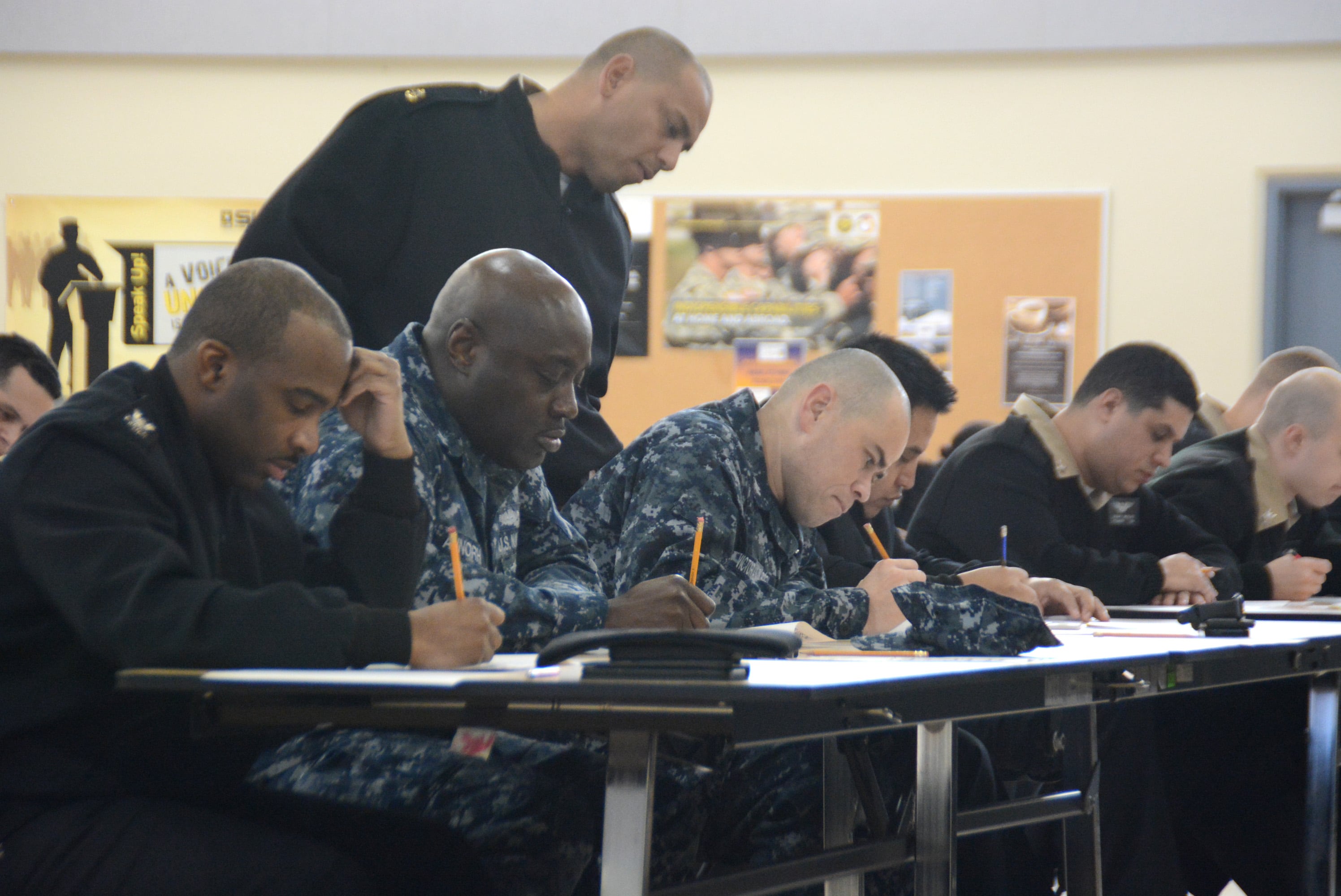This story was originally published in Navy Times on Monday, July 25, 2011
If you know your rating inside and out and can prove it in writing, your chances to advance could go up starting next fall.
In the first overhaul of advancement exams in a decade, the number of questions will drop from 200 to 175 and the number of general military knowledge questions will be limited to 25. The time you’re given to take the test will remain the same.
The result: more time to spend on each question and more emphasis on in-rate knowledge. An in-depth study showed that the exams were falling short when it came to gauging your level of job knowledge.
The move will standardize the breakdown of general and specialized questions for paygrades E-4 through E-7. Now, everyone will have 150 rating-specific questions and 25 general military questions.
The move is a reversal from the last big change in 2002, when general military questions were added because the Navy believed sailors needed to know more about the overall military as they were given greater leadership roles.
The current system will remain for two more advancement cycles. But starting with the fall 2012 testing cycle, all sailors testing for advancement in the petty officer ranks will see the new system, although they will have the same three hours to get it done.
The first new exam for prospective chiefs will debut in January 2013.
The changes were announced in NAVADMIN 197/11 and affect only advancement exams.
The exam result makes up 42 percent of the score for those competing for E-4 and E-5; 47.5 percent for those up for E-6; and 50 percent for those hoping to make chief. The rest of the advancement formula takes into account evaluations, awards and education level to produce a final multiple score, which determines whether you move up.
The change to the focus of the test, personnel official say, will not affect how exams are scored or how a final multiple is computed - but it will change what you study.
“I wouldn’t say it’s tougher, but it’s going to be a more comprehensive test that’s geared toward your rating knowledge and thus more reflective of what you do every day,” said Master Chief Electrician’s Mate (SS) Jeromie Cook, Naval Education and Training Professional Development and Technology Center command master chief. ”[Advancement exams] are written and designed to essentially map your workday, that’s what we’re shooting for - to determine if one sailor knows more about what they’re doing on a daily basis than the sailor sitting next to them.”
The changes were developed after Navy officials studied 10 years of advancement data and found the tests to be lacking in what they’re expected to do.
“The goal of the exam is to rank people based on their [in-rate] knowledge,” said Lt. Cmdr. Jim LeViness, director of the Navy Advancement Center. “Sure, [professional military knowledge] needs to be in there, it’s important and needs to stay in, but we found that you don’t need any more than 25 [questions] to make a proper assessment on any topic area.”
Limiting the number of military questions to 25 and cutting the overall number of questions translates to 50 more in-rating questions for those going up for chief and 35 more for those going for first class. Those going for E-5 will see 15 more in-rate questions.
The E-4 exam will see a drop in military questions from 50 to 25.
The two-cycle delay in implementing the changes, LeViness said, was due to the fact that new grading programs must be developed and tested. Also, test-makers wanted to give sailors time to prepare for the switch.
“There is a significant software modification required, currently in progress, to accommodate the exam restructure,” LeViness said. “The PO1 and CPO exams require a significant number of occupational questions be added.”
Those new questions will be developed by rating experts over the next year.
This must be completed before next April, when the bibliographies for each rating will be posted online. “Bibs” serve as a road map for sailors as they study for the new exams.
The change in emphasis already has some sailors worrying, although LeViness said it will be a better test for most.
“I think there’s some sailor apprehension out there because this is different from what they’re used to because for most, this is the only [exam system] they’ve ever known,” he said. “Sure, it’s a new thing, so I can understand that apprehension, but really it should be viewed as a positive thing that will have a positive impact on their ability to advance.”
Mark D. Faram is a former reporter for Navy Times. He was a senior writer covering personnel, cultural and historical issues. A nine-year active duty Navy veteran, Faram served from 1978 to 1987 as a Navy Diver and photographer.




